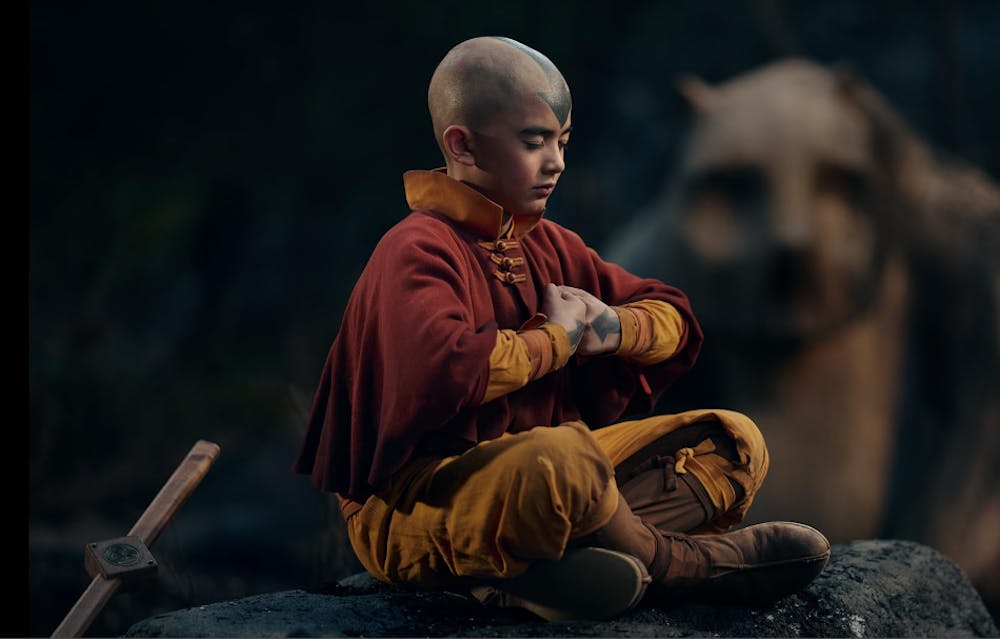Three things: 1) No, it's not as bad as the movie. 2) ‘Show don't tell’. And 3) … why?
After five years of production and a change in leadership, Netflix released its own live action adaptation of Nickelodeon’s iconic series: “Avatar the Last Airbender.” The sets are beautiful, and the effects and CGI look clean, but at what cost to the story? By trying to set itself apart from the original show (created by Michael Dante DiMartino and Bryan Konietzko), it’s lost the key elements that made the animated series so good in the first place. While not as bad as the infamous M. Night Shyamalan film, the new Netflix rendition is far from honorable.
But comparison aside, how good is the show on its own? It stacks up to a lot of new adaptations like “Wednesday” or “One Piece”, which is to say: it’s entertaining, but it's not prestige TV level. It also looks fantastic, but the writing tends to miss (most) beats — resulting in an awkward mix of high production with patchy writing.
Right off the bat, we are inundated with exposition in episode one, “Aang”. From the weirdly worded intro, to Ozai’s (Daniel Dae Kim) expositive monologue, it feels like the writers were simply trying too hard. The golden rule of writing, “show don't tell”, seems to have been airbended right out the window. The show tells us why there is a war, tells us why Sokka wants to be a leader and tells us why Aang ran away in the first place — along with many more cringe-worthy bits of ham-fisted dialogue. But one thing I wish the show would tell me, is why they absolutely sucked the soul out of Katara's character.
There is no anger and confidence in this Katara (Kiawentiio) (no hate to the actors). We never truly see her lash out, which is arguably the most important part of the whole show. It’s Katara’s anger at Sokka that coaxes out her water bending, which leads to them finding Aang (Gordon Cormier) at the very beginning. Instead, it pans out in a lame boat crash. Katara’s passion is so iconic that it's what usually helps her in combat, like her fight with Master Paku or while dealing with Jet. Momo and Appa were also barely in the show at all, which leaves out a massive amount of charm and story. Furthermore, they took away Sokka’s (Ian Ousley) ignorance and Aang's fun-loving free spirit, leaving little to no material for character development.
Something that I have heard that was universally disliked was how multiple plot beats were mushed together into one episode. The most prominent example being episode 3, “Omashu” where the Freedom Fighters, King Bumi and the mechanist and Teo are all squished into one hourlong episode. Usually each episode culminates into a team effort between Aang, Sokka and Katara, but everyone kind of does their own thing within each episode. This ultimately leads to a weaker story. To use episode 3 again, Katara still meets with Jet, but Sokka never really interacts with him. Because of this, Sokka’s distrust and dislike of Jet makes no sense since there’s truly no bad blood between the two — unlike in the animated series. In the same episode, it ends up being Sokka and Katara who go through the iconic “secret tunnel” of love (que music!) and not Katara and Aang … ya know … the actual lovers.
The live action tries to set itself apart from source material by cutting jokes and plot to enhance brutality and “maturity”, which ends up being the crux of the show’s problems. Because so many core elements of the original are left out, the live action has to explain away most story beats that were previously baked into the original. For example, the spirit world is rushed over, especially in episode 5, “Spirited Away”. The owl spirit Wan Shi Tong would usually end up in season 2, but he’s just put in season one to give exposition about the spirit world. Or how Azula is introduced earlier to explain Ozia’s story, ends up making Azula a flatter character. Rather than just making Ozai more ominous and showing it, they literally just have another character to tell us why Ozai is the bad guy.
There is so much exposition that it ends up feeling less mature than the actual cartoon made for kids was. Even outside of exposition, the show’s attempt to be more mature totally fails tonally. For example, when we see the Fire Nation’s raid on the Airbenders in the first episode, it feels like too much too soon. It fails at making the Fire Nation more menacing — where the original show succeeds by making them more mysterious and mythical.
Netflix gambled with making their own adaptation, and ultimately failed at re-capturing and re-imagining the magic of the source material. But, I will say that I think they re-imagined Zuko (Dallas James Liu) pretty well. Zuko’s character was refreshingly original and exciting to watch, especially in episode 6, “The Blue Spirit.” I immensely appreciate Liu’s sass that he brings to Zuko!
I appreciate that they wanted to breathe a new life into Avatar on Netflix, but to no avail. I really don’t think ATLA was ever meant to be adapted. There is only so much you can adapt. The animation reflects the wondrous and fantastical side of Avatar while also being able to show intense emotion and chaos in the specific way only animators can show. Although fun to watch, “Netflix’s Avatar the Last Airbender” is not much but a shell of the original show.


